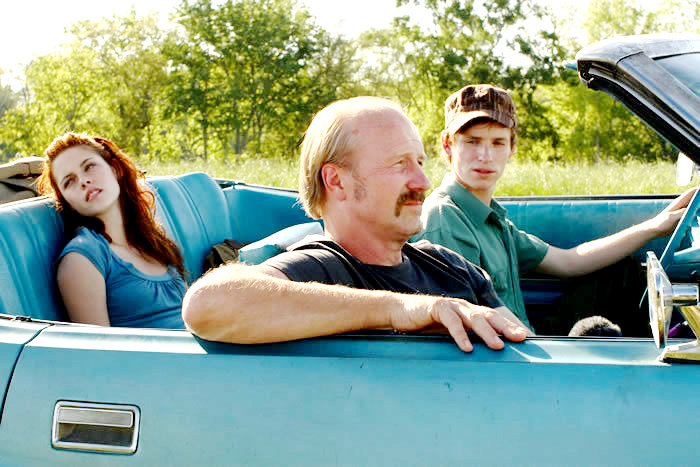Hurt adopts a Kentucky accent for the role, and in certain shots his face reveals the flinty exterior of a hard-bitten Southern loner with low expectations who has endured some very tough times. But if Hurt gives a meticulously detailed performance, he is still so innately refined that Brett never quite registers as an authentic blue-collar type, either vocally or in his body language. Ultimately, men like Brett are just not in Hurt’s DNA, and you are left with the impression of observing a silk purse artfully (but only partially) disguised as a sow’s ear.
The Yellow Handkerchief, adapted from an early-1970s story by Pete Hamill and moved to Louisiana bayou country in 2007, is directed by Udayan Prasad, best known for his 1997 film, My Son the Fanatic
Wending their way through a rural Louisiana populated with alligators and snakes and pocked with the evidence of Hurricane Katrina’s devastation, these three wary, defensive strangers gradually warm to one another in between their emotional scuffles. As they stop at one scraggly site after another, the settings, at once lush and desolate, and sensitively photographed by Chris Menges, reflect their psychological ups and downs.
The movie is a four-character study, the fourth person being Brett’s former wife, May (Maria Bello), a low-end boat saleswoman, who is introduced in flashbacks as Brett’s story leaks out of him bit by bit. Although the movie barely sketches its characters’ backgrounds in Erin Dignam’s elliptical screenplay, in little bursts of confession we learn that the mechanically adept Gordy is at least partly American Indian and feels he belongs nowhere. Because Redmayne is English, attended Eton and often plays aristocrats (he was his mother’s sexually ambiguous incest victim in Savage Grace”), he is as far away from the geeky Southern loner he portrays in The Yellow Handkerchief as Hurt is from an oil rigger.
Stewart’s Martine is a sullen, working-class version of her character, Bella, in the Twilight movies. Defiant and needy with a complex love-hate relationship with her father, who is never seen in the film, she steadily gravitates toward Brett as a parental figure. Brett rewards her trust by imparting his hard-won practical wisdom when she needs it most.
Martine and Gordy get off to a bad start, when he cajoles her to give him a friendly kiss that he pushes much too far, too fast. The same happens early in Brett’s relationship with May, when Brett mistakes her physical affection for lust and crudely gropes her.
More than anything, The Yellow Handkerchief is about how people read or misread each other’s signals. At various points Brett and May profess to be able to see each other’s histories in their faces. But if they trust their intuitions enough to connect, the everyday misunderstandings that arise threaten to shatter that trust.
In its final 20 minutes The Yellow Handkerchief makes a mawkish leap of faith. Demonstrating how much it likes its characters, the movie makes a mad dash toward a happy ending. Even if you can’t follow it over the rainbow, part of you wants to believe in the pot of gold on the other side.




No comments:
Post a Comment